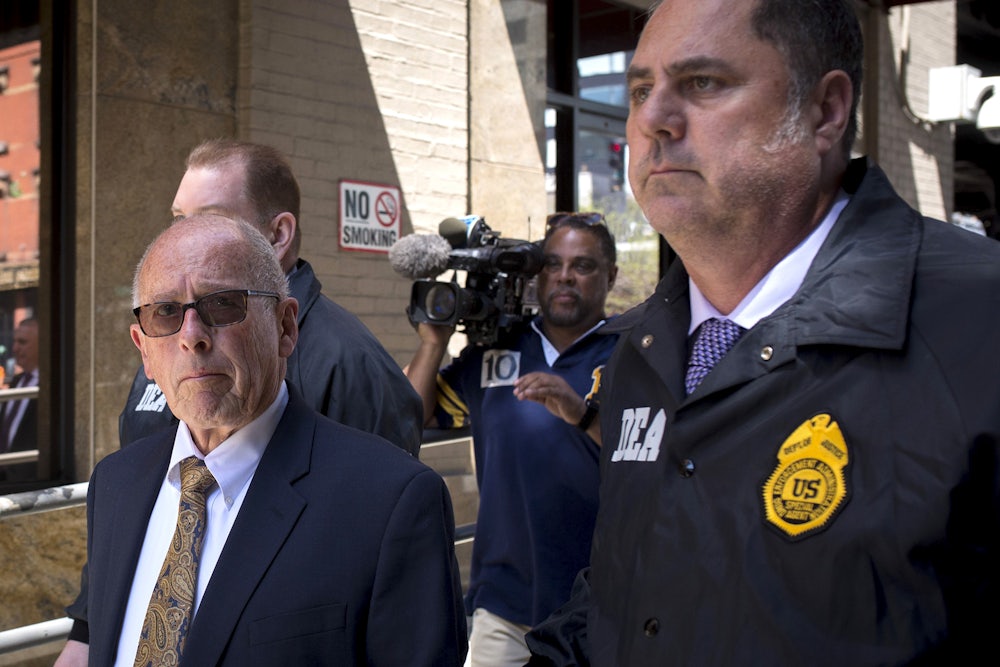In 2016, Laurence Doud III had a seven-figure salary, an honorary degree from the Albany College of Pharmacy, and a beach home in Florida. As Rochester Drug Cooperative’s CEO, he’d handed out lavish bonuses and increased revenue a hundredfold. When he retired the following year, the company lauded his vision. Then, this past April, appearing handcuffed in court, Doud became the first and only corporate executive to be charged in the opioid crisis. He’s facing life in prison.
Doud isn’t the richest pharmaceutical kingpin in the United States—the Sackler brothers earned $13 billion after their company, Purdue Pharma, introduced America to OxyContin in 1996—but Doud is in a class of his own: He knew the opioids he’d manufactured on a mass scale were being sold illegally, fueling a nationwide epidemic, and pushed them anyway, according to the New York attorney general’s office.
Before he became RDC’s chief executive in 1991, Doud worked at pharmaceutical distributors Cardinal Health and McKesson. If RDC was going to compete with those titans, he believed, it would have to borrow from their playbook, which, according The New York Times, involved “brazenly devising systems to evade regulators.” Liberated from surly public restraints, RDC took to supplying notorious pill mills—shady pharmacies that were ordering large quantities of abused substances and selling the opioids to out-of-state patients outfitted with dubious prescriptions. To avoid detection, RDC hiked the ceiling on maximum purchases, so that its client pharmacies could triple their prior orders before the authorities had to be alerted. In short order, the company became the nation’s sixth-largest distributor, hawking 143 million oxycodone pills in New York state alone between 2010 and 2018. Prosecutors say that Doud encouraged these illicit sales to boost revenue and his own salary, which doubled between 2012 and 2016. Or, as U.S. Attorney Geoffrey Berman put it in a press conference announcing the indictment, Doud “cared more about profits than the laws intended to protect human life.”
